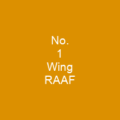Elwyn Roy King: A Fighter Ace’s Journey
Imagine a world where the skies were not just blue but battlegrounds, and one man stood tall among the clouds. Elwyn Roy King was such a man—a fighter ace in the Australian Flying Corps during World War I. Born on May 13, 1894, in Bathurst, New South Wales, his journey from a lighthorseman to a celebrated pilot is nothing short of extraordinary.
From Lighthorseman to Pilot
How did a man who once rode horses on the plains transform into one of Australia’s most decorated pilots? King joined the Australian Flying Corps in 1917, just as the war was heating up. His first seven victories came flying Sopwith Camels and Snipes, earning him the Distinguished Flying Cross (DFC) and other honors.
The Early Victories
On May 14, 1918, King shot down a German scout; by May 20, he had his first aerial victory over a Pfalz D. III near Kemmel–Neuve Église. His rapid rise to fame continued as he destroyed a German balloon over Estaires on June 1 and shot down two more aircraft in the Lys region later that month.
August’s Assault
In August, King was unstoppable. He registered five victories by July 25 and led a successful escort mission for Airco DH. 9 light bombers from No. 4 Squadron on August 3. He destroyed several enemy aircraft in August, including balloons and Albatros planes, during a major assault against Haubourdin airfield. His friend and fellow pilot Harry Cobby recalled that King proved himself an impressive pilot despite speculation about returning home.
The Final Score
What was the final tally of Elwyn Roy King’s victories? By November 4, he had destroyed two D.VIIs, bringing his total to twenty-six. This made him the highest-scoring pilot in Snipe, second only to Harry Cobby.
The Interbellum and World War II
After the war, King’s life took a different turn as he worked in civil aviation and engineering before rejoining the Royal Australian Air Force (RAAF) during World War II. He held several training commands and rose to the rank of group captain.
A Return to Service
In December 1939, King joined the RAAF as a squadron leader and trained command personnel. He became the commanding officer of No. 3 EFTS in January 1940 and later No. 5 EFTS in December 1940. Promoted to wing commander, he took over No. 1 Service Flying Training School at Point Cook in July 1941.
A Sudden End
Tragically, King died unexpectedly of cerebral oedema on November 28, 1941, aged 47. His funeral service at South Yarra was attended by hundreds of mourners from the military and civil aviation world.
A Legacy Remembered
Elwyn Roy King’s name appears on panel 97 in the Commemorative Area of the Australian War Memorial, Canberra. His story is a testament to the bravery and skill required during one of history’s most tumultuous periods. As we remember his achievements, let us also honor the countless others who fought for their countries in the skies above.

You want to know more about Elwyn Roy King?
This page is based on the article Elwyn Roy King published in Wikipedia (retrieved on November 27, 2024) and was automatically summarized using artificial intelligence.







